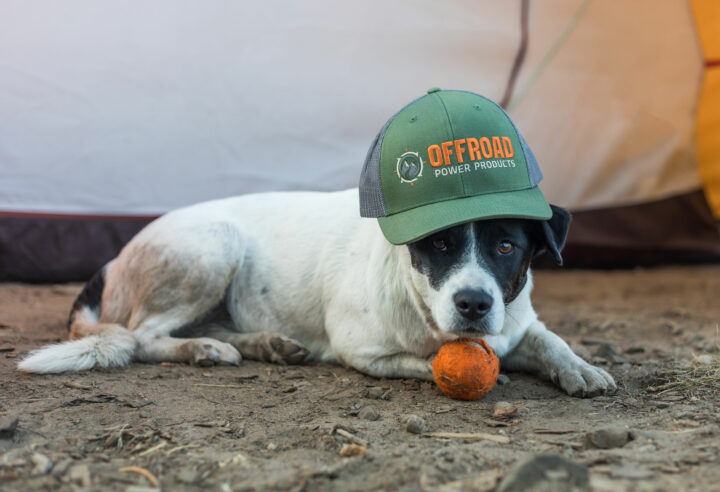
Camping with Dogs
Camping with dogs is a lot fun for human and canine alike. All it takes is a little planning, some common sense, and the right gear.

Dog Camping Best Practice
Don’t leave a dog unwatched at a campsite: It’s not only potentially disruptive for other campers, but it could also endanger your dog if wildlife wanders into camp.
Pack Ample Water. Your dog camping kit should include a lightweight/collapsible bowl for water. It’s smart to carry a dog-specific water bottle too.
Use doggy bags: Don’t kid yourself - just because a dog is an animal doesn’t mean that dog waste is a natural part of the environment. Dog poop is disgusting, unsightly, and when it is left on the ground near a creek, river, or lake, it eventually breaks down and pollutes the water.
Always have a leash handy and use it often: Campgrounds nearly universally require that dogs remain on leashes of no longer than 6 feet. The leash laws on trails can vary, but as a general rule-of-thumb always be prepared to leash your dog.
Sleep in close proximity to your dog: Most areas usually require that dogs sleep with you either in the tent, camper, or vehicle. Sleeping with your dog helps to quiet your dog, and keep it safe.
Don’t leave dog food out at the campsite: Leaving food out invites wildlife to your campsite. While squirrels and mice won’t cause you much trouble, bigger critters can be more problematic.


Always Research Your Destination’s Dog Rules
Whatever kind of camping trip you have in mind, be sure to do a little research before departure. There’s nothing worse than pulling up to a trailhead and being greeted by a No Dogs Allowed sign.
When it comes to camping with dogs, rules regarding dogs vary from place to place. Some national parks, for instance, are more dog-friendly than others. Most developed campgrounds allow dogs, but leash laws within campgrounds vary greatly. In some areas, off-season dog rules are different from peak season.
Broadly speaking, the following is usually true regarding the rules of dog camping (but again, do research before departing):
- Most national parks allow leashed dogs. Some national parks allow leashed dogs on certain trails. Taking dogs in national park backcountry is typically forbidden. These same rules usually apply to state parks as well. This national parks map is an excellent resource.
- U.S. Forest Service land and BLM land are both usually more welcoming to dogs than national parks. Since they collective manage well over 400 million acres of land, this means that public land is a fantastic option when you’re considering taking your four-legged friend. This being said, it’s still important to check rules in advance and to be respectful of the other campers and the environment.

Dog-specific Camp Gear
First Aid Kit: Wise campers always carry a well-stocked first aid kit. The same holds true when camping with dogs. The U.S. Forest Service recommends carrying the following canine-specific first aid items when dog camping:
- Tweezers for tick removal
- A multitool that has a needle-nose pliers for extracting porcupine quills or thorns
- An emergency blanket for treating shock or cold
- Booties to protect/cover injured paws
- A packable first aid book with instructions for pets
- The name, phone number, and directions for a nearby vet or pet clinic
Collar light: A collar light is a lightweight and affordable way to keep your dog visible at night. They are particularly handy in areas in which the rules allow a dog to be off leash.
An extra towel: Unless you like sleeping with a wet, muddy dog, make sure that you have towel to clean up your dog before it enters the tent.
Lightweight/collapsible food and water bowl: If you’re packing light, there’s really no need for two dog dishes – use a packable bowl that pulls double-duty for food and water
Dog backpacks: A dog backpack makes a dog more visible at the campsite and on the trail, and it allows your dog to carry poop bags schlep its own food.
Dog sleeping pad:Allowing your dog to cozy up to your sleeping bag is fine. But If you’d prefer your dog not to snuggle with you, pack a small inflatable mat and cover it with a lightweight blanket or pack towel.











